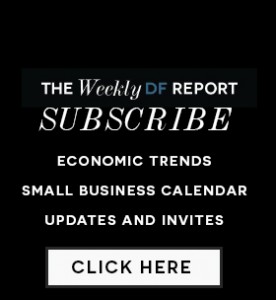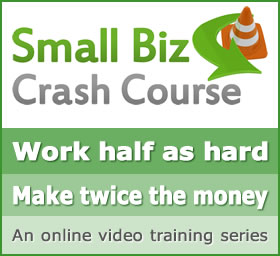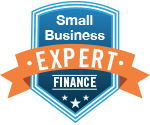I love my students. They’re interesting people, hardworking, funny and talented. They come from interesting families too.
Three months ago one of them asked me to speak to her parents about their business to see if we could get them on a more profitable path.
Here’s the business in a nutshell:
The dad sells used cars and then finances them to working people who have poor credit. This is a risky business for everyone involved.
The dealer has to buy cars, finance the inventory, rent land to house them, insure them, and maintain them.
Then they deal with the hefty depreciation expense that happens with assets that lose value over time.
The customer who buys has to stay healthy to be able to work to make the 36 timely monthly payments. If not, the dealer repossesses the car.
Oh yes, and did we mention for this delicate balance to work, all the parties need to be honest? There are so many possible points of failure in these transactions, my head is spinning.
If you looked at the Net Income Statement, it looks like this multi-million dollar business is making money this month.
Even with all those expenses, the bottom line or Net Income is positive; so far so good.
But if you’ve been reading my book, Accounting for the Numberphobic, you now know the Net Income Statement doesn’t tell you everything you need to know.
It only answers if the business is showing a profit. It doesn’t tell you if the revenues are converting into cash.
Remember, without enough cash to run the business, game over.
In fact, your business could be showing a profit and still be going bankrupt.
So we went to the Cash Flow Statement. Now we can see the stress fractures a bit more clearly.
Frankly without even looking at the Cash Flow Statement, we know a few things that will put great stress on the cash position of this business.
First, cash goes out to buy the cars. There’s no financing for the dealer to buy used cars. As a dealer, you buy ‘em, you own ‘em.
In this case, the bank has extended a very, very large line of credit to buy the cars.
Then the dealer has to pay all his bills to support carrying this inventory which we articulated earlier.
- Cash out for insurance.
- Cash out for employee salaries.
- Cash out for rent.
- Cash out for maintenance.
- Cash out for bookkeeping.
- Cash out for taxes.
- Cash out, out, out, out and more out.
Get the picture?
These expenses are in the tens of thousands of dollars every week. Think of the cash out like gasoline draining fast out of your car’s tank.
Unless some cash comes in, you’re in deep yoghurt.
So the dealer sells a car or two or ten or even 100 in a month. The cash challenge here is that cash went out, but cash doesn’t come in right away.
It takes 36 months for the value of the car and the interest on the loan to be realized. The interest rates are high because these are at-risk populations.
But guess what else is high? Default rates. In fact, they are almost 40%. Holy cow.
Let’s say the gross margin on a used car meets our 30% hurdle rate.
If you have a default rate that high, you’d have to have a gross margin of 60% just to stay in business and absorb the cost of defaults.
You might argue the car is collateral; if someone doesn’t pay their loan amount the car can get repossessed and can be resold.
That’s true, except the car now is older and it has less value than it did when you sold it to the customer. Who knows how the car has been cared for either.
No legally allowable interest rate will compensate for this low margin, high-risk business.
Oh yes, did I mention the bank has loaned this business several million dollars to buy cars to keep this losing proposition in play?
They have, so there’s a lot of debt on the part of the owner that has to get paid back. With such high default rates and low cash generation, it will be extremely difficult, if not impossible for him to do this.
What we didn’t tell you is not only are default rates high, they’re trending higher for all kinds of reasons.
 This is a big problem that’s growing into a cash crisis.
This is a big problem that’s growing into a cash crisis.
Doubling down on a losing proposition just burns cash faster. This is true whether you’re selling cars or scarves on Etsy.
Here’s what we recommended;
Sell the loan portfolio to a private investor. Based on current discounts to value, selling the loan portfolio with all its warts would be enough to satisfy the multi-million dollar bank loan.
In this business, the problem is not how much you can sell the loan portfolio for, it's if there are any buyers willing to buy. This is a liquidity problem.
As long as there's liquidity in the market, sell to the highest bidder as soon as possible.
Whew, I can sleep more easily now, how ‘bout you?
Sell all the used cars on the lot at auction. A dollar in the hand today is worth more than a depreciating automobile tomorrow.
This reduces his fixed overhead right now. The land rental costs go away immediately. Insurance costs go down dramatically.
Yes, staff will have to be cut because the business will be smaller.
The other possibility is that he will need different kinds of staff like mechanics, not sales people, but you have to make the tough call or close your doors.
This is about small business survival.
Focus on after sales services or road side services. Collaborate with the banks who finance the cars instead of being the bank and holding all the default risk.
Every service sale will convert to cash within thirty days. That’s a lot better than waiting 36 months for your cash, right?
There will also be no default risk. Banks will be the ones repossessing the cars and they pay their bills.
This is satisfying the debt and reducing expenses.
Next, we need to look at all the ways this business owner can generate revenues TODAY.
This is the list we came up with for his market:
- After sale repairs
- Roadside towing services
- Repossession services
He’s already got all the equipment, the experience, the licensing and the garage to market his services to all new and used car dealers.
Now he’s a collaborator, not a competitor since no one in town offers all these services with integrity.
If you looked at his revenue trends on the repo and repair businesses, it’s double the size from last year.
So if the economy is softening, which it is in this market, what business would you rather be in; one that’s growing with no default risk or one that’s shrinking with growing default risk?
What we did essentially is reduce this man’s revenues to one fifth of what they were with the new revenue model.
To him, it felt like he wouldn’t be able to provide for his family because he was only looking at the revenue line.
What he’s beginning to realize is a smaller but more profitable and cash rich business is far preferable to a large company that’s losing money and burning cash faster than it can collect cash.
I hope he takes our advice. Then we’d only have to reach 999,999 more small businesses to reach our goal of 1,000,000!
And if you really didn't understand any of the financial terms used in this article, please do get the book. It's illustrated by Ron Bucalo, a funny guy who worked for the Walt Disney Company for twenty years.
It might just change the future of your small business.
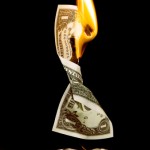

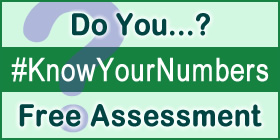 Take the Assessment
Take the Assessment